Some Chemical Engineering interview questions - answers compiled here.
- Any idea on recombinant protein expression?
- Are carbon steel storage tanks appropriate for NaOH solutions?
- Are fin tubes necessary for steam heating a liquid?
- Cetane no. and sulphur required in diesel fuel for euro-IV
- Do you have recombinant protein expression experience? Explain?
- Explain the Deacon reaction?
- Explain various protein purification techniques?
- For a centrifugal pump if the pump is running and we close the discharge valve what is the effect
- How are plate heat exchangers used in an ammonia refrigeration system?
- how can we derive power factor equation p=vi cos phi? derivation?
- how can we measure entropy?
- how FOULING effectd the heat transfer rate
- How much experience you are having in commercial software for protein design?
- how much maximum power can be generated by 320v, 10kg-cm synchronus motor if shaft is roteted mechanically at 50 to 60 rpm?
- how to calculat suction head in centrifugal pump?
- How to calculate the release flowrates from pressurized gas systems?
- How to calculate the sonic velocity of a gas stream?
- How to determine the particle size distribution for a given bulk solid?
- How to estimate the efficiency of a pump?
- Is it possible to compare the resistance to chloride attack of several materials of construction?
- Is petroleum a mixture of hydrocarbon?
- Name of the fraction at which benzene xylene and toulene is obtained during coal tar distillation
- Thyristor related applications
- What are some good estimates for heat transfer coefficients for coils in tanks?
- What are the affinity laws associated with dynamics pumps?
- What are the effects of oils on the properties of Polyolefins?
- what are the precautions u are taking while starting HT motors?
- What are the steps involved in w.ine making?
- What can cause bulk solids to stop flowing from a bin?
- What compounds are responsible for the odours that come from wastewater treatment plants?
- What does the catalystic converter on an automobile do?
- What is a good estimate for the absolute roughness for epoxy lined carbon steel pipe?
- What is are the main terms in Unit Operations? and what is its charecteristics?
- What is difference between Overall heat transfer coeficient & individual heat transfer coefficient
- what is load and what are the types of load?
- what is meaning of pid how it is using controlers
- What is microstir?
- What is Pinch Technology?
- what is the apt definitions for apparent power ,active power and reactive power?and explanation about different types of lamps?
- what is the differance between Horizental and vertical heat exchanger?
- what is the discharge pressure formula, for calculating discharge pressure?
- What is the ignition temp. of Alluminium,Coper & Iron.
- What is the ignititon temprecher of Diesel,Petrol & Carosion oil.
- What is the Import Procurement Cycle ? and what are the customization steps in SAP ?
- what is the meaning of flaring
- What is the most common cause of solid size segregation in bulk solid systems?
- what is the purpose of capacitor? and capacitor load means what? how does it connect?
- What is the reason for removing silicon from aluminum?
- What is the speed of a rotary drier
- What is the symbol of sodium ?
- What is the various utilities of the process plant?
- What is unit operation?
- What regulates, or gives a substance the viscosity it has?
- What steps can be taken to avoid stress corrosion cracking (SCC) in steel vessels used for storing anhydrous ammonia?
- Which is more effective , a single extraction with a large volume of solvent or several small volume extractions? Explain.
- Which reformer efficiencywise best?
- Which thing is responsible for making petroleum?
- Why is post-weld heat treatment sometimes necessary for welded vessels?
- Why is steam added into the cracker in thermal cracking?
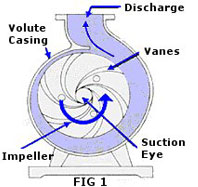 Fig 1 illustrates a cross-section of a typical centrifugal pump.
Fig 1 illustrates a cross-section of a typical centrifugal pump.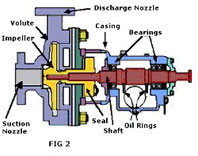
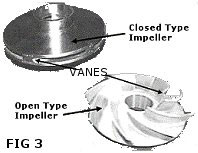
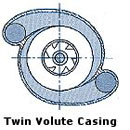
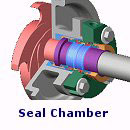
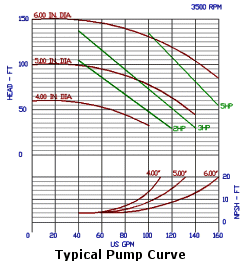
 Boundary layers appear on the surface of bodies in viscous flow because the fluid seems to "stick" to the surface (*see note). Right at the surface the flow has zero relative speed and this fluid transfers momentum to adjacent layers through the action of viscosity. Thus a thin layer of fluid with lower velocity than the outer flow develops. The requirement that the flow at the surface has no relative motion is the "no slip condition."
Boundary layers appear on the surface of bodies in viscous flow because the fluid seems to "stick" to the surface (*see note). Right at the surface the flow has zero relative speed and this fluid transfers momentum to adjacent layers through the action of viscosity. Thus a thin layer of fluid with lower velocity than the outer flow develops. The requirement that the flow at the surface has no relative motion is the "no slip condition."



